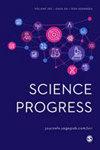TVGCN:用于多变量和多特征时空序列预测的时变图卷积网络
IF 2.6
4区 综合性期刊
Q2 MULTIDISCIPLINARY SCIENCES
引用次数: 0
摘要
时空(ST)图建模近来受到越来越多的关注。现有的大多数方法都依赖于预定义的图结构,或者在整个训练过程中构建一个单一的可学习图。然而,由于节点关系会随着时间的推移而不断演变,因此使用预定义的图结构来有效捕捉动态的 ST 变化具有挑战性。此外,这些方法通常只利用原始数据,忽略了外部时间因素。因此,我们提出了一种新颖的时变图卷积网络模型,该模型整合了外部因素,用于多特征 ST 序列预测。首先,我们利用注意力构建时变邻接矩阵,捕捉节点之间的动态空间关系。在训练、验证和测试阶段,图结构会随时间而调整。然后,我们利用门控激活单元和残差连接,通过扩张因果卷积对时间依赖性进行建模。值得注意的是,通过嵌入绝对时间和融合多特征,预测的准确性得到了提高。该模型已被应用于三个真实世界的多特征数据集,在所有情况下都达到了最先进的性能。实验表明,该方法在应用于多特征和多变量 ST 序列问题时具有很高的准确性和鲁棒性。本文章由计算机程序翻译,如有差异,请以英文原文为准。
TVGCN: Time-varying graph convolutional networks for multivariate and multifeature spatiotemporal series prediction
Spatiotemporal (ST) graph modeling has garnered increasing attention recently. Most existing methods rely on a predefined graph structure or construct a single learnable graph throughout training. However, it is challenging to use a predefined graph structure to capture dynamic ST changes effectively due to evolving node relationships over time. Furthermore, these methods typically utilize only the original data, neglecting external temporal factors. Therefore, we put forward a novel time-varying graph convolutional network model that integrates external factors for multifeature ST series prediction. Firstly, we construct a time-varying adjacency matrix using attention to capture dynamic spatial relationships among nodes. The graph structure adapts over time during training, validation, and testing phases. Then, we model temporal dependence by dilated causal convolution, leveraging gated activation unit and residual connection. Notably, the prediction accuracy is enhanced through the incorporation of embedding absolute time and the fusion of multifeature. This model has been applied to three real-world multifeature datasets, achieving state-of-the-art performance in all cases. Experiments show that the method has high accuracy and robustness when applied to multifeature and multivariate ST series problems.
求助全文
通过发布文献求助,成功后即可免费获取论文全文。
去求助
来源期刊

Science Progress
Multidisciplinary-Multidisciplinary
CiteScore
3.80
自引率
0.00%
发文量
119
期刊介绍:
Science Progress has for over 100 years been a highly regarded review publication in science, technology and medicine. Its objective is to excite the readers'' interest in areas with which they may not be fully familiar but which could facilitate their interest, or even activity, in a cognate field.
 求助内容:
求助内容: 应助结果提醒方式:
应助结果提醒方式:


